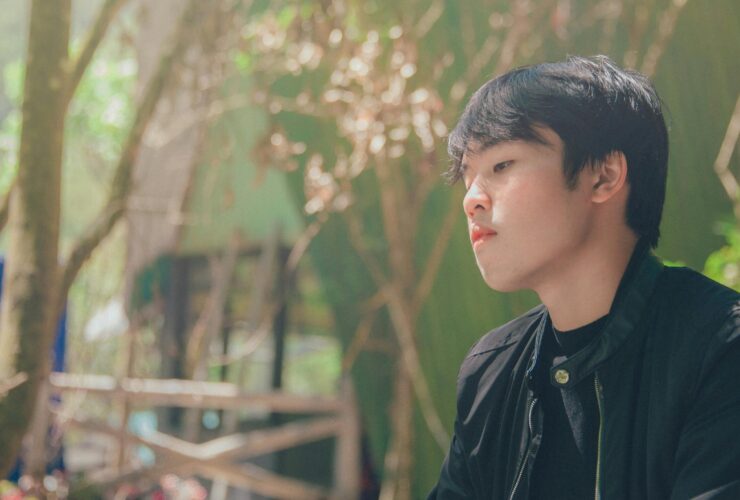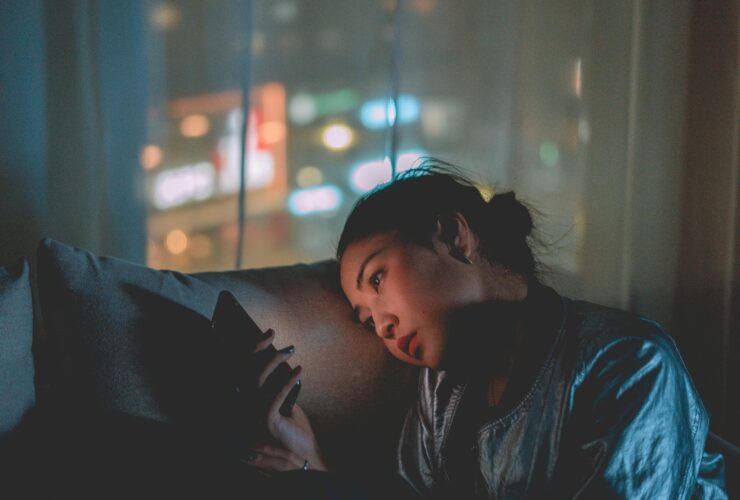We all go through periods in our life during which we feel a bit more down or a bit less motivated, or just unlike our usual selves. Sometimes, these changes in mood and motivation can begin and end when the seasons change. For many people, they may notice themselves feeling more down or having less energy in the late fall or early winter. Other people may experience those feelings in late spring or early summer. For some folks, this change can be more than just seasonal blues. In this blog, we’ll explain seasonal affective disorder and share some tips for managing it.
What is seasonal affective disorder?

There is a lot of overlap between seasonal affective disorder (SAD) symptoms and depression symptoms, and you may have heard it called seasonal depression. SAD symptoms include persistent sad or empty mood, decrease in energy, feelings of guilt or hopelessness, loss of interest in previously enjoyable activities, or irritability. Other symptoms may include social withdrawal or changes in sleep, appetite, or libido. SAD symptoms tend to be cyclical, worsening with the onset of the season and lessening with the passing of the season. There are two patterns of SAD, determined by the season during which symptoms begin.
Fall-Winter SAD
Most people who struggle with seasonal affective disorder experience the winter-pattern onset, with symptoms beginning late fall or early winter. It is thought to be caused by shorter days, decrease in daily sunlight, possible vitamin D deficiency, and more melatonin production. It is important to note that winter-pattern SAD is more than just the seasonal blues. Many people may feel sad here and there with the gloomy weather. But winter-pattern SAD is more than just the winter blues. It is a more persistent feeling of sadness or loss of interest in life. This can also look like oversleeping, overeating, or social isolation withdrawal.
Spring-Summer SAD
Fewer people experience the summer-pattern onset of seasonal affective disorder, also sometimes called reverse SAD. While it is less common, it is no less valid. However, many individuals who experience summer-pattern SAD find themselves feeling invalidated. Others may question why they seem so sad or down when the weather is ‘so nice!’ But it is actually thought that the ‘nice’ weather may be a potential cause. The warmer temperatures can mean longer days and an increase in allergies or social activities, which can contribute to summer-pattern SAD symptoms. It can look like an increase in social anxiety, restlessness, recklessness, or aggressive behavior. This can also include difficulty sleeping.
Whether you are experiencing winter-pattern or summer-pattern seasonal affective disorder, know that transitions and changes are stressful for most people. The transitions around time changes (i.e., daylight savings) or weather changes can be especially difficult for those with pre-existing mood disorders. Additionally, SAD seems to affect women more often than men, though the research is unclear as to the reason.

When should you seek professional help?
Because it is thought that the main causes are physiological or environmental, it can be important to seek professional help as soon as you notice symptom patterns. You can start by talking with your primary care physician. Your PCP can determine whether you are experiencing another physiological condition (e.g., through a blood test) or seasonal affective disorder. They can then offer advice regarding different treatments. Common treatments include: antidepressants, supplements, light therapy, psychotherapy
- Antidepressants are prescribed to treat depression in general, but can potentially help with seasonal affective disorder too. These medications work by targeting the levels of specific chemicals in your brain. For example, a common antidepressant works by increasing the amount of serotonin available in your brain, which can help improve your mood.
- Supplements can help with making up for any vitamin deficiencies you may be experiencing. For those with winter-pattern SAD, with the potential cause being less natural sunlight, a vitamin D supplement can be helpful.
- Light therapy involves a lamp that simulates sunlight, and is used to provide with you additional light at specific times of day. For those with winter-pattern SAD, this can be particularly helpful in the morning. Before buying a sunlight lamp, it is important to discuss with your doctor what kind of light and how much light you should be getting.
- Psychotherapy can help by providing a place to process this period of depression, identify and challenge unhelpful thought patterns or behaviors, and learn different coping strategies. Your therapist can offer both support and accountability to help you through this difficult season.
How can you manage it yourself?

Take some time to check in with yourself and note if you’ve observed any significant changes, and if you’ve noticed patterns across the year. If you have, start by implementing some extra self-care. You can prepare yourself ahead of time, if you start noticing your mood or motivation taking a dip. Stick to a scheduled routine, regardless of the time change or the amount of daylight your location experiences. Make sure to eat balanced, nutritious meals with a wide variety of food groups. It can be tempting to seek out sweet, sugary foods to help you feel better. But making sure you get other foods, like protein and fiber, can be especially important.
Regardless of winter-pattern or summer-pattern seasonal affective disorder, you might find yourself not wanting to be social. However, social isolation can actually make you feel worse. Seeing friends, family, and loved ones can still be recharging. As weather permits, do your best to get outside, as natural sunlight and fresh air can not only help you feel but also reset your circadian rhythm. Regular physical movement, such as stretching or walking, can be helpful. Limit electronic use, especially before bedtime. Keep up with your usual personal hygiene. Finally, consider tracking your mood or journaling.
Remember that seasonal affective disorder is just that – seasonal and cyclical. It is not a permanent state of being, even if it feels like it is dragging. And it is valid, regardless of which onset you may experience. Once you are able to identify the pattern, you can address it.
Seek Individual Therapy at Yellow Chair Collective in Los Angeles or New York
If you are seeking therapy specifically tailored to your needs, consider reaching out to the culturally sensitive therapists at Yellow Chair Collective. We understand that different parts of our identities can show up in different parts of our lives, and that it can make navigating relationships difficult. We also understand that there may be unique cultural and contextual factors that may influence your experiences.
At our Los Angeles, CA, and New York City, NY-based therapy practice, we have many skilled, trauma-informed therapists who can provide an empowering therapeutic experience. For your added convenience and simplicity, we offer online therapy for anyone in the state of California or New York. We know that managing seasonal affective disorder can be challenging, and we want to support you on your journey. Follow the steps below to begin.
- Fill out the contact form to get connected with us.
- Get matched with one of our individual therapists.
- Start managing your depressive symptoms and feeling better today.
Other Services at Yellow Chair Collective
There are many options for treatment using online therapy in California and New York, it just depends on what you’re needing. And while we certainly service Asian American folks, we also work with individuals from other cultures, too. So, whether you’re needing support in overcoming anxiety, burnout, trauma, or PTSD, we can help. Likewise, we serve teens and couples in need of support, too. So when you start online therapy with us, you can bring your whole self, including past struggles, cultural impacts, and more.






